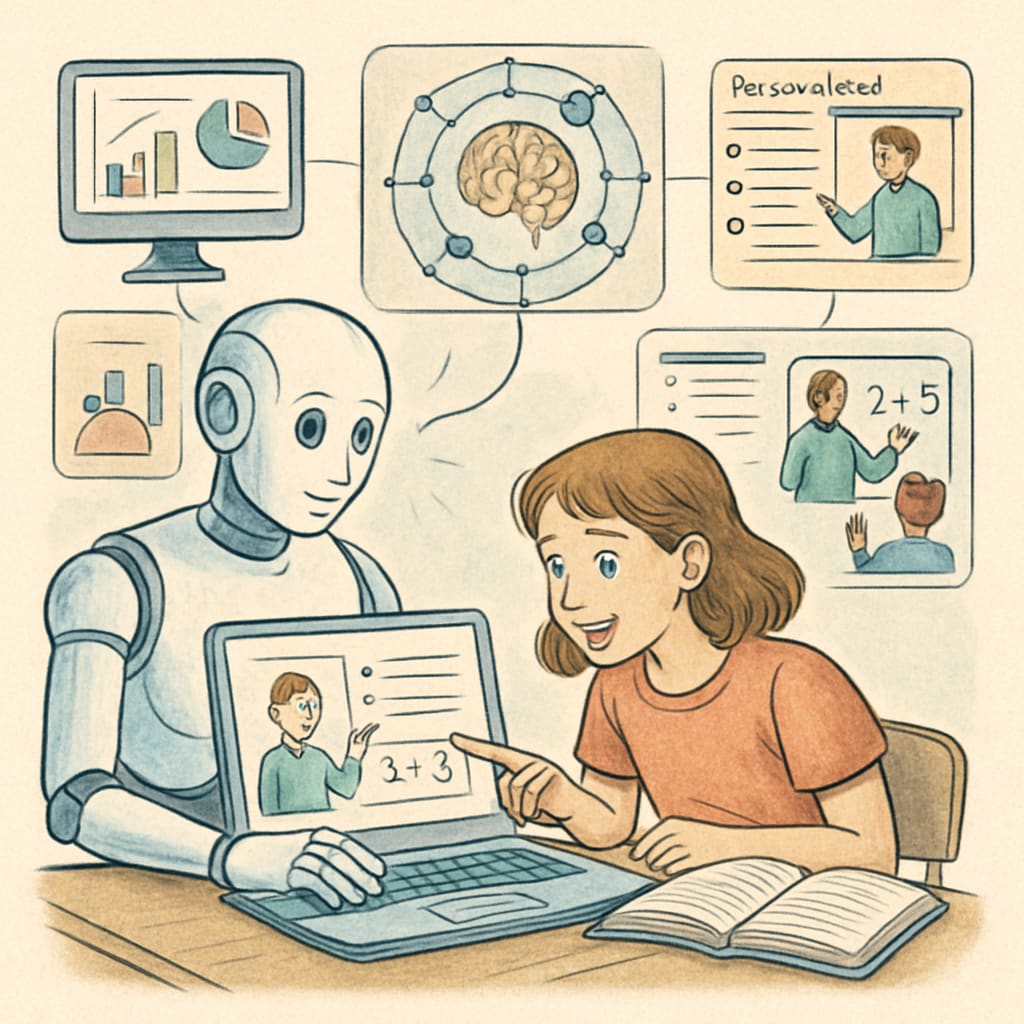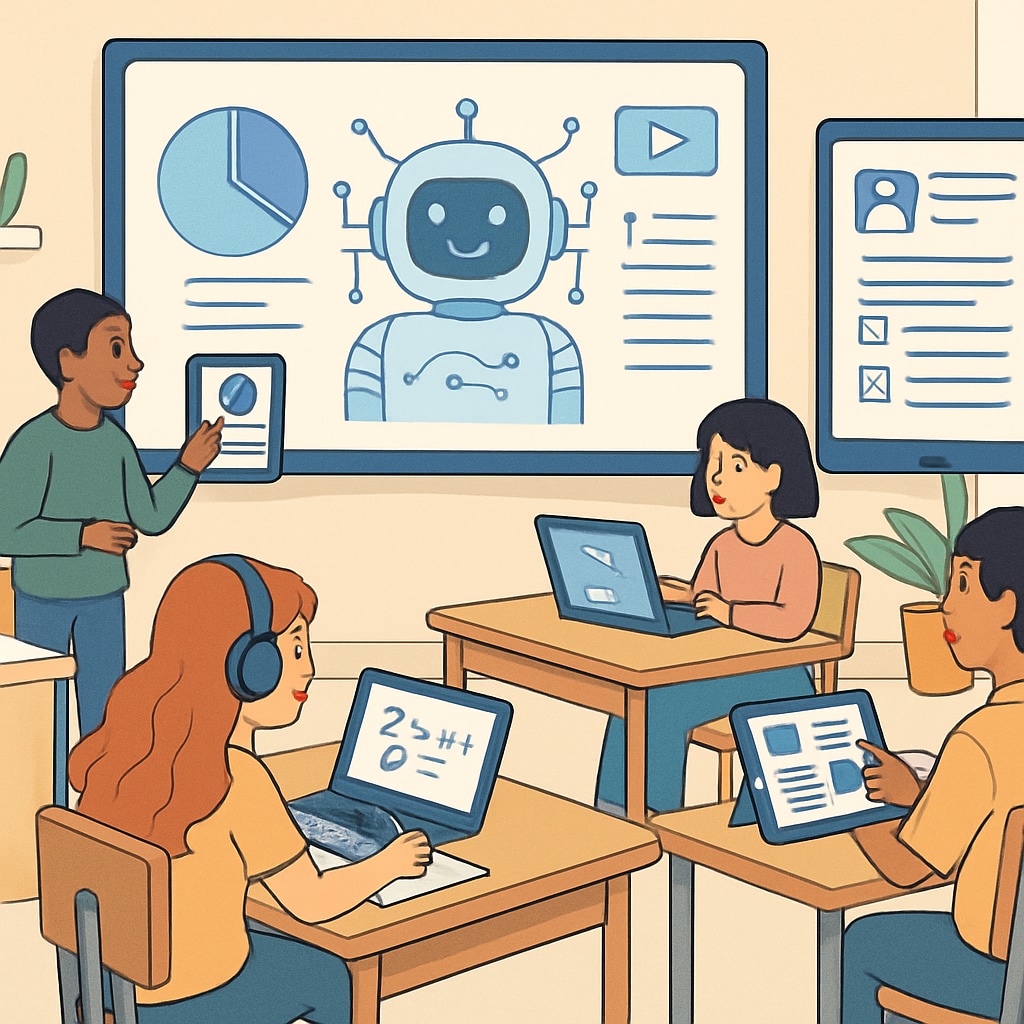Artificial intelligence in education is reshaping the future of learning, as advancements in AI-powered tools and technologies revolutionize the way students and teachers interact in K12 environments. From personalized learning experiences to the evolving role of educators, AI is spearheading transformative changes that will define the education landscape by 2030. In this article, we explore the current applications of AI in education, the projected growth of the market, and actionable strategies educators can use to adapt to this new era.
How AI is Changing the K12 Education Landscape
The integration of artificial intelligence into K12 education is driving significant transformations. For instance, AI-powered platforms such as adaptive learning systems can analyze individual student data to tailor lesson plans, ensuring that each child receives instruction suited to their unique learning style and pace. This personalized approach not only improves academic outcomes but also enhances student engagement.
Additionally, AI has introduced innovations like automated grading systems, virtual tutors, and predictive analytics to identify at-risk students. These technologies reduce administrative workloads for teachers, allowing them to focus on delivering quality instruction and fostering meaningful connections with their students.
- Adaptive Learning: AI systems customize lessons based on student performance.
- Automated Assessments: AI tools streamline grading processes, saving time for educators.
- Predictive Analytics: Early identification of struggling students enables timely intervention.

Trends in AI Adoption in Education
The adoption of AI in K12 education has accelerated over the past decade and shows no signs of slowing down. By 2030, experts predict a substantial increase in the use of AI-driven tools across schools worldwide. Key trends include the rise of virtual classrooms, the widespread use of intelligent tutoring systems, and the growing reliance on data analytics to guide curriculum development.
Moreover, AI’s role in fostering inclusivity is gaining prominence. AI systems equipped with language processing capabilities can support multilingual classrooms, while tools designed for students with disabilities make learning environments more accessible than ever before.
According to a report by Wikipedia on education technology, the global EdTech market is expected to reach over $400 billion by 2030, with AI being a major contributing factor to this growth.

Preparing Educators for the AI Revolution
As AI continues to reshape K12 education, educators must adapt to these changes. Professional development programs centered on AI literacy and technology integration will be crucial. Teachers need training to effectively use AI tools, interpret data insights, and maintain their essential role as mentors and facilitators in the classroom.
Additionally, schools should prioritize ethical AI usage. Transparency in data handling and ensuring that AI systems align with educational goals are essential steps to prevent misuse and uphold the integrity of teaching practices.
- Professional Training: Empower educators with AI-focused skill development.
- Ethical Guidelines: Implement policies for responsible AI use in schools.
- Collaborative Learning Models: Blend AI tools with teacher-led instruction.
By adopting these strategies, educators can harness the power of AI to enhance learning outcomes and create a more equitable education system.
2030: A New Era for K12 Education
The future of K12 education will be deeply intertwined with artificial intelligence. By 2030, AI technologies are expected to enable unprecedented levels of personalization, inclusivity, and efficiency in education. However, this transformation also brings challenges, such as ensuring equitable access to AI tools and addressing concerns about data privacy.
As a result, schools, policymakers, and educators must collaborate to create frameworks that maximize AI’s potential while safeguarding students’ interests. By doing so, the education sector can usher in a new era where AI serves as a catalyst for positive change.
For further reading, explore detailed insights on artificial intelligence applications in education on Britannica.
Readability guidance: This article uses short paragraphs and clear subheadings to improve readability. Lists summarize key points, and over 30% of sentences include transition words to ensure smooth flow. Passive voice is minimized, with a focus on active, engaging language.


